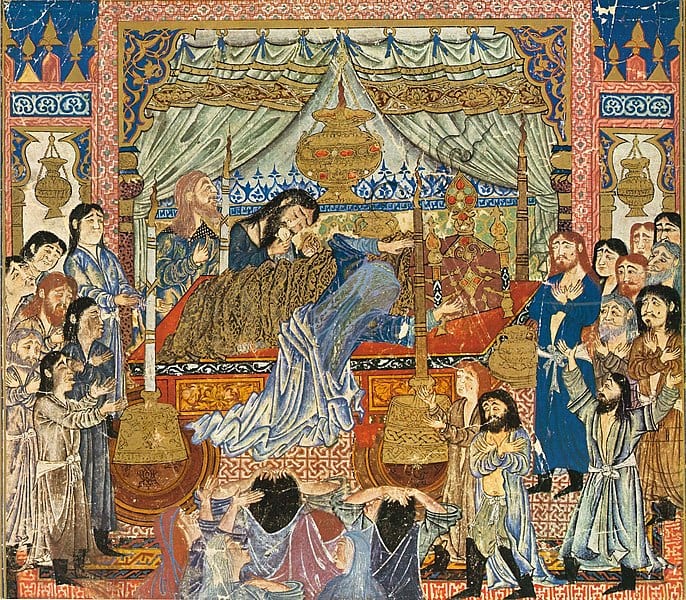
(Painted for an illuminated copy of the “Shahnameh” around AD 1330, in Tabriz)
I believe that I’ve already posted my basic fall teaching schedule. But just in case there’s anybody who’s interested and who is unaware, here is a summary:
MESA 320
T-Th
9:30 AM – 10:45 AM
The Qur’an in English
IHUM 242
T – Th
12:05 PM – 1:20 PM
Introduction to the Humanities of Islam
MESA 250
T – Th
4:00 PM – 5:15 PM
Introduction to the Religion of Islam
It’s possible, even likely, that I’ll end up supervising some individual “directed readings” courses. I often do. But the three classes above will be the core of what I’m up to through the middle of December.
***

(Wikimedia Commons public domain image)
The tales of the Thousand and One Nights (which I will teach in my IHUM 242 class) are sometimes attacked as misogynistic. And there’s certainly basis for such a charge. Take the overall frame story, for example, in which the faithless unchastity of women (as a class) plays a central role. Two kings, brothers, discover that their wives have been brazenly betraying them with slaves when they go away. And then they discover a genie or demon whose own wife routinely betrays him while he’s sleeping, most recently (via coercion) with them. So their view of womankind isn’t exactly positive. One of the two royal brothers vows, in fact — and carries out his vow — to marry a new wife every day and to put her to death the following morning. (The previous wives have already been executed for their infidelity by this point.)
But now enter Shahrazad, commonly known in the West (thanks, among other things, to Nikolai Rimsky-Korsakov’s wonderful 1888 symphonic suite of that name) as Scheherazade:
“Now, as mentioned earlier, the vizier . . . had an older daughter called Shahrazad and a younger one called Dinarzad. The older daughter, Shahrazad, had read the books of literature, philosophy, and medicine. She knew poetry by heart, had studied historical reports, and was acquainted with the sayings of men and the maxims of sages and kings. She was intelligent, knowledgeable, wise, and refined. She had read and learned.” (pp. 14-15)
She is not only deeply learned. She is courageous and resourceful. She volunteers to marry the wife-destroying king and, by telling him intriguing tales that are somehow never finished by sunrise, she keeps him fascinated for years until he finally abandons his plan to kill her as he had killed her predecessors.












